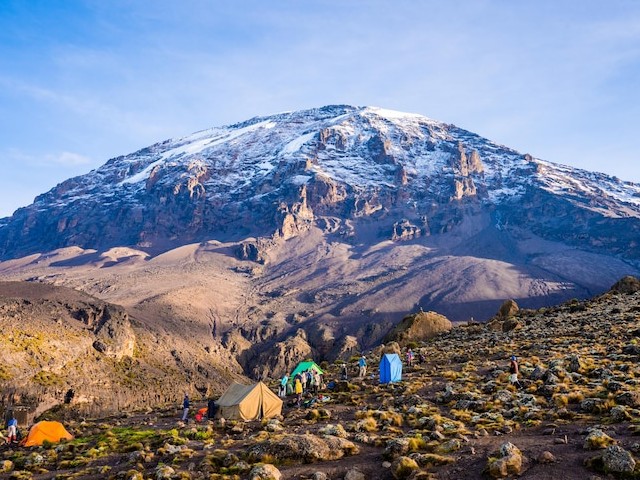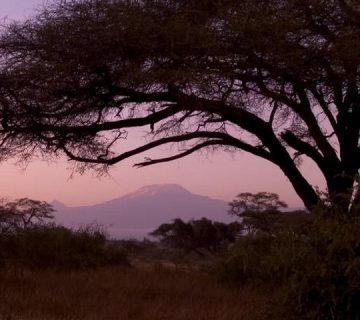Photography Gear Recommendations for Kilimanjaro Climbs
Capturing the Majesty of Africa’s Highest Peak
Imagine standing atop the highest point in Africa, Mount Kilimanjaro, with the world spreading out like a canvas below you. The golden sunrises, the rugged terrain, and the unique wildlife are each a photographer’s dream. At Kilimanjaro Centre for Trekking and Ecotourism (KCTE), we understand the allure of capturing these moments. That’s why we’ve crafted this guide to help you select the best photography gear for your climb, ensuring every breathtaking scene is beautifully immortalized.
Why Photography Matters on Kilimanjaro
Mount Kilimanjaro isn’t just a trek; it’s a journey through multiple ecological zones, each offering unique landscapes and photo opportunities. From the lush rainforests at its base to the arctic summit, photography allows you to capture the essence of this majestic mountain and share your experiences with the world.
Choosing the Right Camera
DSLR vs. Mirrorless
While DSLRs have long been favored for their reliability and range of lenses, mirrorless cameras are gaining ground for being lighter and more compact—crucial factors on a strenuous climb like Kilimanjaro. We recommend models like the Nikon Z6 or the Sony Alpha A7 III for their excellent image quality, robust build, and overall versatility.
Point-and-Shoot Cameras
For those who prefer something simpler and even lighter, high-end point-and-shoot cameras such as the Sony RX100 series or the Canon PowerShot G5 X Mark II offer great image quality without the complexity or weight of interchangeable lens cameras.
Action Cameras
Don’t forget an action camera like the GoPro HERO series. These are perfect for capturing video in challenging environments or when you simply can’t stop to take a photo.
Essential Lenses for Kilimanjaro
Wide-Angle Lens
A wide-angle lens is invaluable for landscape shots that capture the vastness of the terrain. Look for lenses with a focal length between 10mm and 24mm.
Telephoto Lens
A telephoto lens will help you photograph wildlife from a safe distance or zoom in on distant features of the mountain. A focal length of 70-200mm or more is ideal.
All-in-One Zoom Lenses
Consider carrying an all-in-one zoom lens like the 18-300mm if you need versatility and wish to minimize lens changes in dusty conditions.
Must-Have Accessories
Tripods
A lightweight, compact tripod can be invaluable for long-exposure shots, especially during the golden hours of sunrise and sunset.
Filters
UV filters protect your lens from scratches, while polarizing filters are great for reducing glare and enhancing the blue of the sky.
Extra Batteries and Memory Cards
The cold can drain batteries quickly, and changing them can be cumbersome. Carry extras to ensure you don’t miss a shot. Similarly, bring enough memory cards to handle high-resolution images, especially if you shoot in RAW format.
Protective Gear
A sturdy camera bag is necessary to protect your gear from the elements. Consider a weather-resistant backpack with customizable compartments.
Photography Tips for Kilimanjaro
Understand Your Gear
Familiarize yourself with your camera’s settings before the climb. Know how to quickly adjust ISO, aperture, and shutter speed, and ensure you can operate your camera comfortably in gloves if necessary.
Use the Golden Hours
The hours after sunrise and before sunset provide the most magical light for photography. Plan your schedule to make the most of these times.
Respect the Mountain
Always prioritize safety and environmental respect over getting the perfect shot. Stick to the trails and follow your guide’s instructions.
FAQ: Gear Up for the Perfect Shot
What is the best camera for Kilimanjaro climbs?
Mirrorless cameras are ideal for their light weight and compact size. Models like the Sony Alpha A7 III combine high image quality with rugged durability.
Can I rent photography equipment in Tanzania?
Yes, options are available to rent gear in Tanzania before your climb. Contact KCTE for recommendations and assistance with arranging rentals.
How do I manage power for my camera on Kilimanjaro?
Carry spare batteries and keep them warm, possibly inside your jacket, to prolong battery life in the cold climate of Kilimanjaro.
Should I bring a drone for aerial shots?
Drones are subject to strict regulations in Tanzania and its national parks. Contact KCTE for up-to-date advice on using drones on Kilimanjaro.
Capture Your Kilimanjaro Experience with KCTE
Embarking on a Kilimanjaro climb is a once-in-a-lifetime adventure, and capturing it through photography enriches your memories and shares your story with the world. Kilimanjaro Centre for Trekking and Ecotourism (KCTE) is dedicated to making your climb successful, both in reaching the summit and in capturing the stunning vistas along the way. Book your Kilimanjaro climb with us, and ensure your journey to Africa’s rooftop is unforgettable. Reach out today to start planning your adventure and to get more personalized advice on photography gear for your specific needs. Let KCTE be your guide to the top of Africa, where every snapshot is a masterpiece waiting to be taken.




